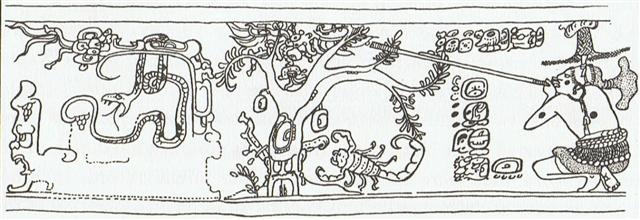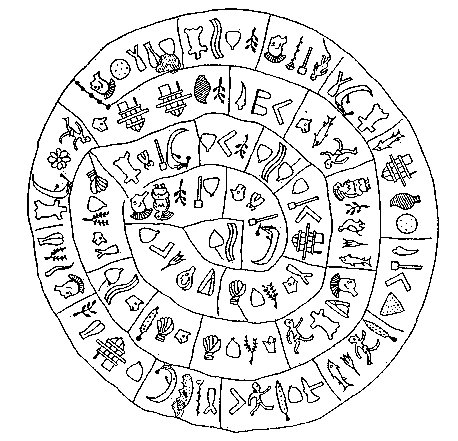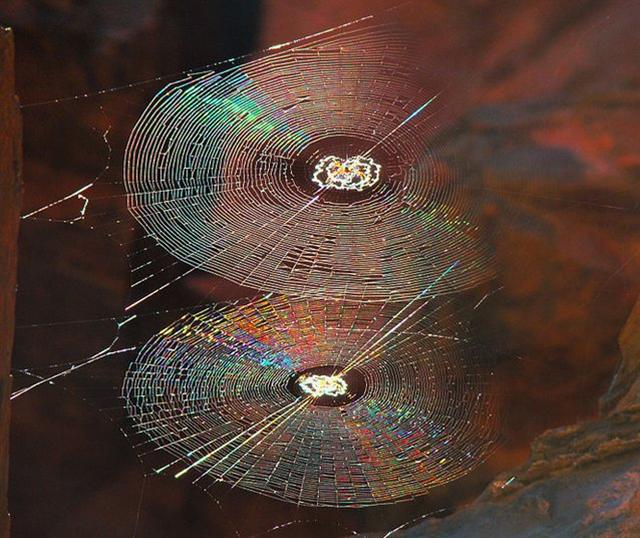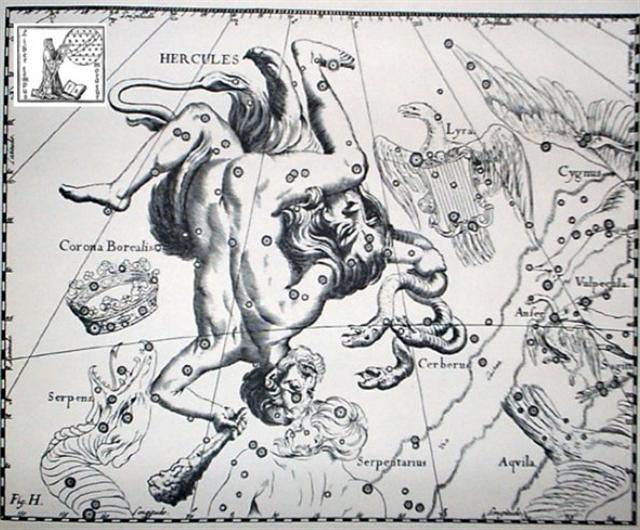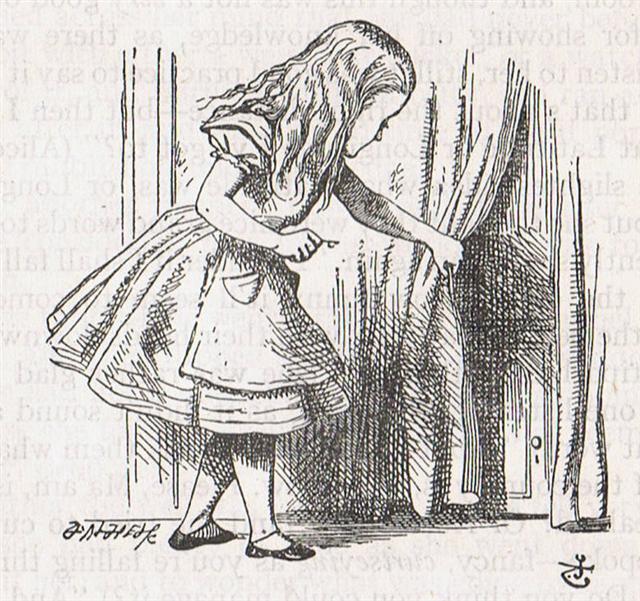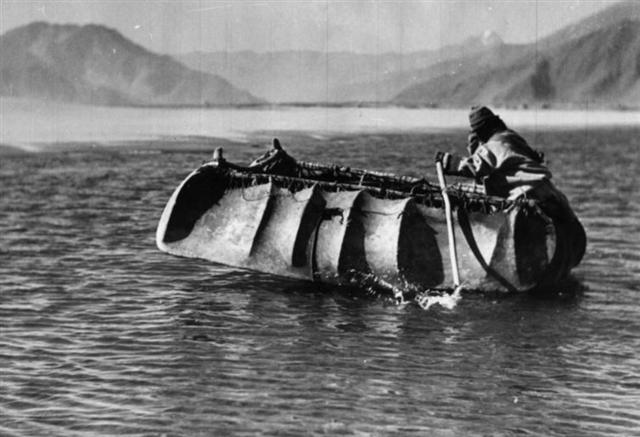|
TAHUA
38 The Head of the figure in Gb4-3 is assymmetric, presumably indicating more light in the past than 'ahead':
Currently Avior was indeed located a month after the northern summer solstice (↔ southern winter solstice):
And therefore, on Easter Island, they ought to easily have seen the stars in plain sight, not being dangerously blinded by the rays from the hot Sun. ... Like the sun, chiefs of the highest tabus - those who are called 'gods', 'fire', 'heat', and 'raging blazes' - cannot be gazed directly upon without injury. The lowly commoner prostrates before them face to the ground, the position assumed by victims on the platforms of human sacrifice. Such a one is called makawela, 'burnt eyes' ... And they could then have identified Argo Navis with a hare paega building - like the protecting shell of an overturned canoe. South of the equator the shape of the ship Argo Navis would have been perceived as upside down. ... Sky (rangi) and Earth (papa) lay in primal embrace, and in the cramped, dark space between them procreated and gave birth to the gods such as Tane, Rongo and Tu. Just as children fought sleep in the stifling darkness of a hare paenga, the gods grew restless between their parents and longed for light and air ...
... Long ago in the very beginning of time there dwelt within a shell an infant god whose name was Ta'aroa. He was Ta'aroa the unique one, the ancestor of all gods, the creator of the universe whose natures were myriad, whose backbone was the ridgepole of the world, whose ribs were its supporters. The shell was called Rumia, Upset. Becoming aware at last of his own existence and oppressed by a yearning loneliness Ta'aroa broke open his shell and, looking out, beheld the black limitless expanse of empty space.
Hopefully, he shouted, but no voice answered him. He was alone in the vast cosmos. Within the broken Rumia he grew a new shell to shut out the primeval void ... ... The first god's house in the temple was the body of Ta'aroa's own person, and it became a model for all other god's houses. One day Ta'aroa let himself go into a trance and his spirit stood away in space while his body floated in the sea, then he said to his daughters: 'Oh, girls! How many canoes are there at sea?' And the daughters replied: 'It is like one, it is like one!' Then Ta'aroa's spirit said: 'Who can it be?' And they answered: 'It is thyself assuredly!' ... ... It is certainly true that the exterior form of the hare paenga, when the superstructure and thatch are intact, resembles an overturned boat, with the form established by the foundation. However, it is equally true (and perhaps equally important) that the configuration of the foundation is otherwise most like the Rapa Nui vulva design called komari. The komari is the quintessential female symbol which is everywhere prominent in Rapa Nui art, often carved in rock and wood, incised on human crania, and painted on the human body. In the hare paenga foundation form, the komari is cut in stone and embedded in the earth, the cosmologically female realm. Spanning above, over and virtually into this komari foundation is the ridgepole 'backbone' and curved rafter 'ribs' of what I surmise to be a symbolically male form. In short, we have a shelter which may be metaphorically understood as 'the sky father enclosing his progeny as he embraces the earth'. Those progeny entered and departed this male/female, earth/sky form through a low, dark tunnel which may be logically compared to the birth canal. This postulated symbolism does not, of course, negate the 'overturned boat' comparison, since Polynesian canoes were often likened to the bodies of great ancestors or to Tane as First Man. The canoe which transported the first exploratory voyage to Rapa Nui was said to have been called The Living Wood, a reference to Tane. Indeed, it is likely that the 'overturned boat' concept and its relationship to home, hearth and lineage, which is so graphically visible, was commonly understood (hence its retention in the oral literature), while the more esoteric godly connections, perhaps along the lines of those explored here, were known only by spiritual leaders ... And Maui had fished up land in form of the house of Tonganui (Great South): ... At length there appeared beside them the gable and thatched roof of the house of Tonganui, and not only the house, but a huge piece of the land attached to it. The brothers wailed, and beat their heads, as they saw that Maui had fished up land, Te Ika a Maui, the fish of Maui. And there were houses on it, and fires burning, and people going about their daily tasks. Then Maui hitched his line round one of the paddles laid under a pair of thwarts, and picked up his maro, and put it on again ... Maro was the name not only for a loincloth but also for the dry (maro) month of June.
The original shell had been named Rumia (Upset ↔ Raised Up). Like Wakah-Chan:
Presumably this name was referring to how the ecliptic plane was raised up high in July.
Like the Poike peninsula in the northeastern corner of Easter Island, which became the assigned land for the long-ears and their King Iko. Poike. MAO. poike 'place aloft'. Barthel 2. Ike. Pau.: Tapa beater. Mgv.: ike, id. Ta.: ie, id. Mq.: ike, id. Sa.: i'e, id. Ma.: ike, to strike with a hammer. Ikeike, gracious, pleasant. Ta.: iéié, elegant, vain, gracious. Mq.: iéié, id. Ha.: ieie, dignified, vainglorious. Churchill. ... This mythical bird is Itzam-Yeh, Classic prototype of Wuqub-Kaqix, 'Seven-Macaw', of Popol Vuh fame. In that story, in the time before the sky was lifted up to make room for the light, the vainglorious Seven-Macaw imagined himself to be the sun. Offended by his pride, the Hero Twins humbled him by breaking his beautiful shining tooth with a pellet from their blowgun. This pot shows One-Ahaw aiming at the bird as he swoops down to land in his tree. As Itzam-Yeh lands on his perch, the text tells us he is 'entering or becoming the sky' ...
There were 123 glyphs beginning with the outline of the hull (bivalve shell) of a ship in Ga2-27 → 22 / 7 → π.
... He turned round and round to the right as he fell from the sky back to the water. Still in his cradle, he floated on the sea. Then he bumped against something solid. 'Your illustrious grandfather asks you in', said a voice. The Raven saw nothing. He heard the same voice again, and then again, but still he saw nothing but water. Then he peered through the hole in his marten-skin blanket. Beside him was a grebe. 'Your illustrious grandfather asks you in', said the grebe and dived. Level with the waves beside him, the Raven discovered the top of a housepole made of stone. He untied himself from his cradle and climbed down the pole to the lowermost figure ...
... Zeta (uppercase Ζ, lowercase ζ; Greek: ζήτα ... is the sixth letter of the Greek alphabet. In the system of Greek numerals, it has a value of 7. It was derived from the Phoenician letter Zayin. Letters that arose from zeta include the Roman Z and Cyrillic З ... Zayin (also spelled Zain or Zayn or simply Zay) is the seventh letter of many Semitic abjads ... It represents the sound [z]. The Phoenician letter appears to be named after a sword or other weapon. (In Biblical Hebrew, 'Zayin' means sword, and the verb 'Lezayen' means to arm. In modern Hebrew, 'zayin' means penis and 'lezayen' is a vulgar term which generally means to perform sexual intercourse and is used in a similar fashion to the English word fuck, although the older meaning survives in 'maavak mezuyan' (armed struggle) and 'beton mezuyan' (armed, i.e., reinforced concrete). The Proto-Sinaitic glyph according to Brian Colless may have been called ziqq, based on a hieroglyph depicting a 'manacle' ...
... In other words, the ancient Druidic religion based on the oak-cult will be swept away by Christianity and the door - the god Llyr - will languish forgotten in the Castle of Arianrhod, the Corona Borealis. This helps us to understand the relationship at Rome of Janus and the White Goddess Cardea who is ... the Goddess of Hinges who came to Rome from Alba Longa. She was the hinge on which the year swung - the ancient Latin, not the Etruscan year - and her importance as such is recorded in the Latin adjective cardinalis - as we say in English 'of cardinal importance - which was also applied to the four main winds; for winds were considered as under the sole direction of the Great Goddess until Classical times ...
. Llew visits the Castle of Arianrhod in a coracle of weed and sedge. The coracle is the same old harvest basket in which nearly every antique Sun-god makes his New Year voyage; and the virgin princess, his mother, is always waiting to greet him on the bank ...
|
||||||||||||||||||||||||||||||||||||||||||||||||||||||||||||||||||||



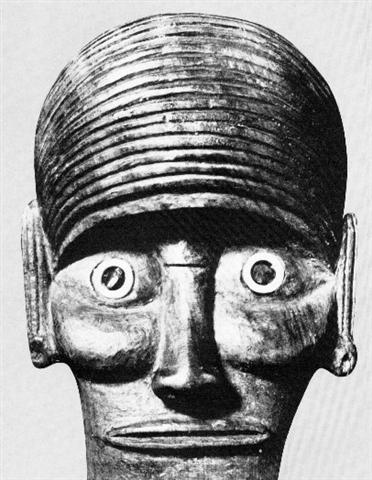


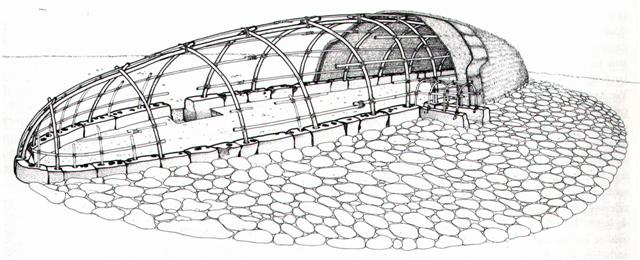
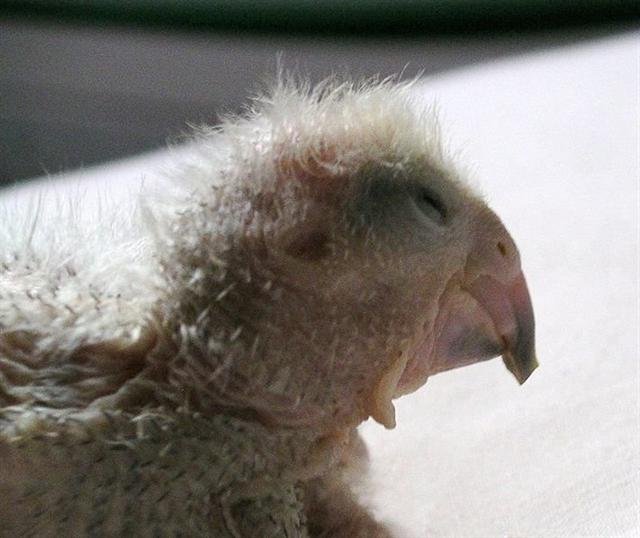
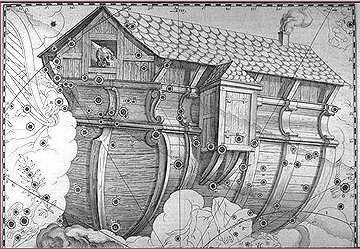
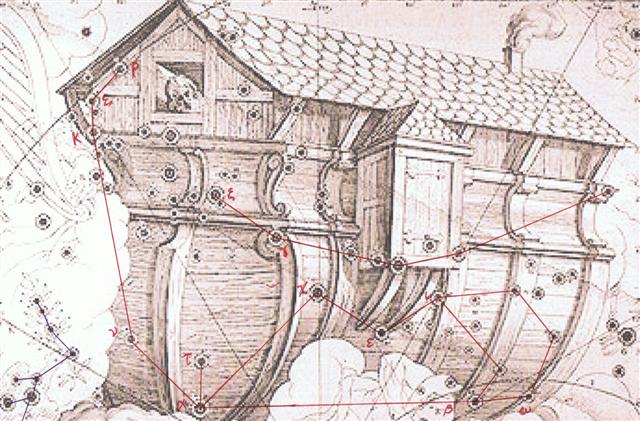
.jpg)

